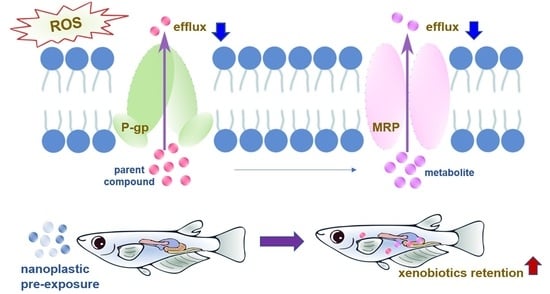Inhibition of Xenobiotics Transporters’ Efflux Ability after Nanoplastics Exposure in Larval Japanese Medaka
Abstract
Share and Cite
Yu, H.; Gao, Z.; Yang, Y.; Li, M.; Chen, Q. Inhibition of Xenobiotics Transporters’ Efflux Ability after Nanoplastics Exposure in Larval Japanese Medaka. Water 2022, 14, 863. https://doi.org/10.3390/w14060863
Yu H, Gao Z, Yang Y, Li M, Chen Q. Inhibition of Xenobiotics Transporters’ Efflux Ability after Nanoplastics Exposure in Larval Japanese Medaka. Water. 2022; 14(6):863. https://doi.org/10.3390/w14060863
Chicago/Turabian StyleYu, Hairui, Zhuo Gao, Yan Yang, Mingyuan Li, and Qiqing Chen. 2022. "Inhibition of Xenobiotics Transporters’ Efflux Ability after Nanoplastics Exposure in Larval Japanese Medaka" Water 14, no. 6: 863. https://doi.org/10.3390/w14060863
APA StyleYu, H., Gao, Z., Yang, Y., Li, M., & Chen, Q. (2022). Inhibition of Xenobiotics Transporters’ Efflux Ability after Nanoplastics Exposure in Larval Japanese Medaka. Water, 14(6), 863. https://doi.org/10.3390/w14060863





